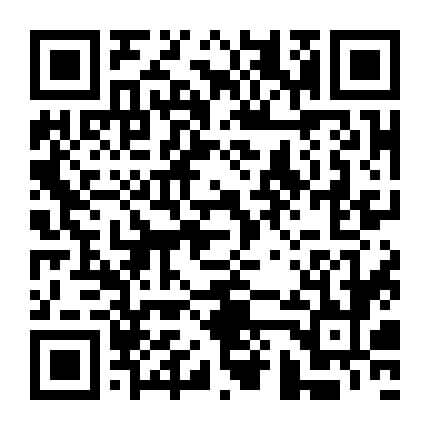2011年全国统考医学考博英语真题
- 1
- 6
- 8
摘要:考博英语真题是每位考生必背的复习资料,希赛网考博英语频道为大家整理2011年全国医学博士英语统一考试真题,详情如下:
希赛网英语频道为大家整理2011年全国医学博士英语统一考试真题。
Part II Vocabulary (10%)
Section A
Directions: In this section, all the sentences are incomplete. Four words or phrases marked A,B,C and D are given beneath each of them. You are to choose the word or phrase that best completes the sentence ,then mark your answer on the ANSWER SHEET.
31. There are many doctors who have endeavored to increase the of their behavior as medical professionals.
A. transaction B.transformation C. transmission D. transparency
32. He seemed most to my idea which was exceptionally creative.
A. alien B.ambulant C. amiable D. amenable
33. The first attempts at gene therapy have mostly ,but technique will surely be made to work eventually.
A. stumbled B. stammered C. stridden D. strutted
34. She is admitted to the hospital with complaints of upper abdominal pain and for fatty foods.
A. preference B.persistence C. intolerance D. appetence
35. By sheer , I met the old classmate we had been discussing yesterday.
A. coincidence B.coherence C. collaboration D. collocation
36. As the drugs began to , the pain began to take hold again.
A. wear off B. put off C. all off D. show off
37. The environment surrounding health care has been greatly altered by the medical technologies.
A. approaching B.impracticable C. sophisticated D. transient
38. At last, she some reasons for her strange behavior.
A. abolished B. admonished C. abstained D. adduced
39. Doctors are concerned with health of people from to the grave.
A. conception B. reception C. deception D. perception
40. In more examinations, the blood is tested in a multichannel analyzer machine for abnormities,
A. concise B.devious C. elaborate D. feasible
Section B
Directions: Each of the following sentences has a word or phrase underlined. There are four words or phrases beneath each sentence. Choose the word or phrase which can best keep the meaning of the original sentence if it is substituted for the underlined part. Mark your answer on the ANSWER SHEET.
41. She fell awkwardly and broke her leg.
A. embarrassingly B. reluctantly O. clumsily D. dizzily
42. Throughout most of the recorded history, medicine was anything but scientific.
A. more or less B. by and large
C. more often than not D. by no means
43. The students were captivated by the way the physician presented the case.
A. illuminated B. fascinated C. alienated D. hallucinated
44. We demand some tangible proof of our hard work in the form of statistical data, a product or a financial reward.
A. intelligible B.infinitive C. substantial D. deficient
45. But diets that restrict certain food groups or promise unrealistic results are difficult——or unhealthy——to sustain over time.
A. maintain B.reserve C. conceive D. empower
46. The molecular influence pervades all the traditional disciplines underlying clinical medicine.
A. specialties B.principles C. rationales D. doctrines
47. One usually becomes aware of the onset of puberty through its somatic manifestations.
A. juvenile B.potent C. physical D. matured
48. His surgical procedure should succeed, for it seems quite feasible.
A. rational B.reciprocal C. versatile D. viable
49. These are intensely important questions about quality and the benefits of specialty care and experience.
A. irresistibly B.vitally C. potentially D. intriguingly
50. This guide gives you information on the best self-care strategies and the latest medical advances.
A. tends B.techniques C. notions D. breakthroughs
Part HI Cloze (10%)
Directions: In this section there is a passage with ten numbered blanks. For each blank, there are four choices marked A, B, C and D on the right side. Choose the best answer and mark the letter of your choice on the ANSWER SHEET.
Whenever people go and live in another country, they have new experiences and new feelings. They experience culture shock. Many people have a (n) 51 about culture shock: they think that it5 s just a feeling of sadness and homesickness when a person is in a new country. But this isn51 really true. Culture shock is a completely natural 52, and everybody goes 53 it in a new culture. There are four stages, or steps, in culture shock. When people first arrive in a new country, they are usually excited and 54. Everything is interesting. They notice that a lot of things are 55 their own
culture and this surprises them and makes them happy. This is Stage One. In Stage Two, people notice how different the new culture is from their own culture. They become confused. It seems difficult to do even very simple things. They feel 56. They spend a lot of time 57 or with other people from their own country. They think, " my problems are all because 15 m living in this country.
Then, in Stage Three, they begin to understand the new culture better. They begin to like some new customs. They 58 some people in the new country. They5 re 59 comfortable and relaxed. In Stage Four, they feel very comfortable. They have good friends in the new culture. They understand the new customs. Some customs are similar to their culture, and some are different, but that5 s OK. They can 60 it.
51. A. accountB.reflectionC. verificationD. misconception
52. A. transitionB.exchangeC. immigrationD. selection
53. A. forB.throughC. afterD. about
54. A. frightenedB. confusedC. uneasyD. happy
55. A. representative ofB.different fromC. peculiar toD. similar to
56. A. intoxicatedB.depressedC. amazedD. thrilled
57. A. lonelyB.aloneC. loneD. only
58. A. make friends withB.make transactions with
C. hold hostility toD. shut the door to
59. A. hardlyB. moreC. veryD. less
60. A. live withB. do withoutC. hold up withD. make a success of
Part IV Reading Comprehension (30%)
Directions: In this part there are six passages, each of which is followed by five questions. For each question there are four possible answers marked A, B, C and D. Choose the best answer and mark the letter of your choice on the ANSWER SHEET.
Passage One
Patients can recall what they hear while under general anesthetic even if they don51 wake up, concludes a new study.
Several studies over the past three decades have reported that people can retain conscious or subconscious memories of things that happened while they were being operated on. But failure by other researchers to confirm such findings has led skeptics to speculate that the patients who remembered these events might briefly have regained consciousness in the course of operations.
Gitta Lubke, Peter Sebel and colleagues at Emory University in Atlanta measured the depth of anesthesia using bispectral analysis, a technique which measures changes in brainwave patterns in the frontal lobes moment by moment during surgery. Before this study, researchers only took an average measurement over the whole operation, says Lubke.
Lubke studied 96 trauma patients undergoing emergency surgery, many of whom were too severely injured to tolerate full anesthesia. During surgery, each patient wore headphones through which a series of 16 words was repeated for 3 minutes each. At the same time, bispectral analysis recorded the depth of anesthesia.
After the operation, Lubke tested the patients by showing them the first three letters of a word, such as “lim”,and asking them to complete it. Patients who had had a word starting with these letters played during surgery—“limit”,for example—chose that word an average of 11 percent more often than patients who had been played a different word list. None of the patients had any conscious memory of hearing the word lists.
Unconscious priming was strongest for words played when patients were most lightly anaesthetized.But it was statistically significant even when patients were fully anaesthetized when the word was played.This finding, which will be published in the journal Anesthesiology could mean that operating theatre staff should be more discreet. What they say during surgery may distress patients afterwards, says Philip Merikle, a psychologist at the University of Waterloo, Ontario.
61. Scientists have found that deep anesthesia .
A. is likely to affect hearing
B. cannot block surgeons5 words
C. can cause serious damages to memory
D. helps retain conscious or subconscious memories
62. By the new study, the technique of bispectral analysis helps the scientists .
A. acquire an average measurement of brainwave changes over the whole surgery
B. decide whether the patient would retain conscious or subconscious memories
C. relate their measurements and recordings to the verbal sounds during surgery
D. assure the depth of anesthesia during surgery
63. To test the patients, the scientists .
A. prepared two lists of words
B.used ninety-six headphones for listening
C. conducted the whole experiment for three minutes
D. voiced only the first three letters of sixteen words during surgery
64. The results from the new study indicate that it was possible for the patients .
A. to regain consciousness under the knife.
B.to tell one word from another after surgery.
C. to recall what had been heard during surgery.
D. to overreact to deep anesthesia in the course of operations.
65. What we can infer from the finding?
A. How surgical malpractice can be prevented.
B.Why a surgeon cannot be too careful.
C. Why surgeons should hold their tongues during surgery.
D. How the postoperative patients can retain subconscious memories.
Part IV Reading Comprehension (30%)
Passage Two
Scientists used to believe adult brains did not grow any new neurons, but it has emerged that new neurons can sprout in the brains of adult rats, birds and even humans. Understanding the process could be important for finding ways to treat diseases such as Alzheimer’s in which neurons are destroyed. Most neurons sprouting in adulthood seem to be in the hippocampus, a structure involved in learning and memory. But they rarely survive more than a few weeks. "We thought they were possibly dying because they were deprived of some sort of input,” says Elizabeth Gould, a neuroscientist at Princeton. Because of the location, Gould and her colleagues suspect that learning itself might bolster the new neurons’ survival, and that only tasks involving the hippocampus would do the trick.
To test this, they injected adult male rats with a substance that labeled newborn neurons so that they could be tracked. Later, they gave some of the rats standard tasks. One involved using visual and spatial cues, such as posters on a wall, to learn to find a platform hidden under murky water. In another, the rats learnt to associate a noise with a tiny shock half a second later. Both these tasks use the hippocampus——if this structure is damaged, rats can51 do them.Meanwhile, the researchers gave other rats similar tasks that did not require the hippocampus: finding a platform that was easily visible in water, for instance. Other members of the control group simply paddied in a tub of water or listened to noises.
The team report in Nature Neuroscience that the animals given the tasks that activate the hippocampus kept twice as many of their new neurons alive as the others. “Learning opportunities increase the number of neurons," says Gould.
But Fred Gage and his colleagues at the Salk Institute for Biological Studies in La Jolla, California, dispute this. In the same issue of Nature Neuroscience, they report that similar water maze experiments on mice did not help new neurons survive.
Gould thinks the difference arose because the groups labeled new neurons at different times. Her team gave the animals tasks two weeks after the neurons were labeled, when the new cells would normally be dying. She thinks the Salk group put their mice to work too early for new neurons to benefit. " By the time the cells were degenerating, the animals were not learning anything," she says.
66. Not until recently did scientists find out that .
A. new neurons could grow in adult brains
B. neurons could be man-made in the laboratory
C. neurons were destroyed in Alzheimer’s disease
D. humans could produce new neurons as animals
67. Gould’s notion was that the short-lived neurons .
A. did survive longer than expected
B.would die much sooner than expected could
C could actually better learning and memory
D. could be kept alive by stimulating the hippocampus
68. Which of the following can clearly tell the two groups of rats from each other in the test?
A. The water used. B. The noises played.
C. The neurons newly born. D. The hippocampus involved.
69. Gould theorizes that the Salk group5 s failure to report the same results was due to .
A. the timing of labeling new neurons B.the frequency of stimulation
C. the wrongly labeled neurons D. the types of learning tasks
70. Which of the following can be the best title for the passage?
A. Use It or Lose It B. Learn to Survive
C. To Be or Not to Be D. Stay Mentally Healthy
Part IV Reading Comprehension (30%)
Passage Three
Here5 s yet another reason to lose weight. Heavier people are more likely to be killed or seriously injured in car accidents than lighter people.That could mean car designers will have to build in new safety features to compensate for the extra hazards facing overweight passengers. In the U. S. , car manufacturers have already had to redesign airB bags so they inflate to lower pressures making them less of a danger to smaller women and children. But no one yet knows what it is that puts overweight passengers at extra risk.
A study carried out in Seattle, Washington, looked at more than 26 000 people who had been involved in car crashes, and found that heavier people were at far more risk. People weighing between 100 and 119 kilograms are almost two-and-a-half times as likely to die in a crash as people weighing less than 60 kilograms. And importantly, the same trend held up when the researchers looked at body mass index (BMl)—a measure that takes height as well as weight into account. Someone 1.8 meters tall weighing 126 kilograms would have a BMI of 39, but so would a person 1.5 meters tall weighing 88 kilograms. People are said to
be obese if their BMI is 30 or over.
The study found that people with a BMI of 35 to 39 are over twice as likely to die in a crash compared with people with BMis of about 20. It’s not just total weight, but obesity itself that’s dangerous. While they do not yet know why this is the case, the evidence is worth pursuing, says Charles Mock, a surgeon and epidemiologist at the Harborview Injury Prevention and Research Center in Seattle, who led the research team. He thinks one answer may be for safety authorities to use heavier crash-test dummies when certifying cars as safe to drive. Crash tests normally use dummies that represent standard-sized males weighing about 78 kilograms.
Recently, smaller crash-test dummies have also been used to represent children inside crashing cars. But larger and heavier dummies aren51 used, the U. S. National Highway Traffic Safety Administration in Washington DC told New Scientist.The reasons for the higher injury and death rates are far from clear Mock speculates that car interiors might not be suitably designed for heavy people. Or obese people, with health problems such as high blood pressure or diabetes, could be finding it tougher to recover from injury.
71. When they redesigned air bags to hold less pressure, the American car manufacturers .
A. found it hard to set standards without the definition of obesity
B.incidentally brought about extra risks to obese passengers
C. based their job on the information of car accidents
D. actually neglected smaller women and children
72. When they categorized the obese people, the researchers .
A. showed a preference for BMI in measurements
B. achieved almost the same results as previously
C. found the units of kilogram more applicable than BMI
D. were shocked to know the number of obese people killed in car crashes
73. To address the problem, Mock .
A. suggested that the safety authorities use heavier crash-test dummies
B. cried for the standardization of crash-test dummies
C. reduced the weights of crash-test dummies
D. encouraged obese people to lose weight
74. While exploring the reason for the higher injury and death rates, Mock would most probably say that .
A. cars can be made safer to avoid crashes
B.it is wise for obese people not to drive drunk
C. it is not just total weight, but obesity itself that is dangerous
D. the main reason behind the problem is drinkers’ heavy weight
75. Which of the following questions is closely related to the passage?
A. Are air bags really necessary to be built in cars?
B.Are cars certified as safe to drive?
C. Are crash-test dummies too thin?
D. Are car accidents preventable?
Part IV Reading Comprehension (30%)
Passage Four
It seems intuitive that going to a specialist physician will result in more thorough and up-to-date care for whatever ails you. In fact, many studies support this idea—but health-care researchers caution that they may not tell the whole story.
The first question is whose patients are sicker? Specialists tend to treat more complicated forms of disease, but generalist——family physicians and general practitioners——are more likely to treat patients with several coexisting diseases.
A second question is what counts as the most valuable treatment? Specialists are more familiar with standards of care for the diseases they treat regularly, says Harlan M. Krumholz of Yale University. On the other hand, a generalist may do a better job of coordinating a patient5 s care and keeping an eye on a person5 s overall health, says Martin T. Donohoe of the Oregon Health Sciences University in Portland.
To further complicate comparisons, many generalists will consult with specialists on complicated cases ,but medical records do not always show that, says Carolyn Clancy of the Agency for Health Care Policy and Research in Rockville, Md.
That said, stroke patients treated by neurologists are more likely to survive than stroke patients treated by generalists. Among about 38 000 stroke sufferers nationwide, 16.1 percent of those treated by a neurologist died within 3 months, compared with 25.3 percent of those treated by family physicians. Several studies have shown that people with heart disease fare better when they are treated by cardiologists, says Ira S. Nash of the Mount Sinai Medical Center in New York, but if s hard to figure out exactly why.
MPhysician specialty, in addition to being a measure of formal training in the field, is also a proxy for clinical experience,” he says. M If s very difficult to separate out the overlapping concepts: one, that practice makes perfect; two, the effect of the educational and time investments in a clinical problem the physician is simply interested in; and three, the issue of formal training. ”Differences between specialist care and generalist care, however, pale in comparison with the finding
that both specialists and generalists often fail to put the latest knowledge into practice, contend both Donohoe and Clancy. A report by the U. S. General Accounting Office documented that heart attack survivors who saw cardiologists regularly were more likely to take cholesterol-lowering drugs and beta blockers—which reduce heart rate and blood pressure—than those who received care from a generalist. Even so, these life-prolonging drugs were not prescribed to many patients who appeared to be eligible for them, implying that both generalists and specialists could do better.
"Maybe we are focusing too much energy on the differences between generalist and specialist care, says Donohoe. Perhaps, he adds, “we should focus more intently on improving the quality of communication and cooperation between generalists and specialists and on developing and promoting practice guidelines that might have a much bigger effect on the overall health of Americans. ”
76. Which of the following questions can most probably come out of the two questions raised in the passage?
A. Is specialist care superior? B. What is specialist care all about?
C. Why is one unwilling to be a generalist? D. Is generalist care the future of medicine?
77. The answers to the two questions suggest that .
A. generalists are more likely to be ignored
B.a specialist can be a generalist, or vice versa
C. neither of the two groups is better than the other
D. patients have every reason to go to specialist physicians
78. According to the passage, the better treatment of stroke and heart disease on the part of specialists
A. cannot simply be ascribed to specialty
B.is hard to be justified on the nationwide scale
C. is enough to prove the superiority of specialist care
D. has much to do with the amount of formal education
79. Both specialists and generalists, Donohoe and Clancy contend, could do a better job of .
A. taking advantage of the other
B.avoiding as much malpractice as possible
C. putting the latest knowledge into practice
D. educating the public to their consciousness of health
80. Donohoe is trying to shift our attention to .
A. better communication and cooperation between generalists and specialists
B.the real nature of specialist and generalist care, respectively
C. the similarities between generalist and specialist care
D. the declining health of Americans
Part IV Reading Comprehension (30%)
Passage Five
Children are spending an increasing amount of time using computers. Computers are now found in most classrooms, and in the majority of homes, almost always with internet access. However, many studies of children5 s use of computers show that there are possible negative effects. This essay will explain the possible negative effects of computer use on children, focusing on the effects on family and peer relationships and the increased tendency towards violent behavior.
Computer use may negatively affect the social relationship between children and their parents. Because children spend so much time on computers, they often know more about advanced computer use than their parents. According to Subrahmanyam and his colleagues (2001) this often leads to a role reversal, where the child becomes a teacher to the parent. In other words, it is often the case that a highly computer literate teenager will teach their parents how to use the more complex functions of computer technology. This can lead to a reduction in parental authority. Moreover, with the anonymity of online communication ,computer users do not know if they are talking to a child or an adult, so all users are treated equally (Subrahmanyam et al, 2001). Children may then expect the same equality in real life, further contributing
to a breakdown in the parent-children relationship (Subrahmanyam et al, 2001).
Children’s peer relationships can also be negatively affected by extensive computer use. Since computers are more likely to be used in isolation by children, they spend little time interacting with their peers (Shields & Behrman, 2001). As a result, children may not develop the social skills they need, or be able to maintain friendships in the real world ( Subrahmanyam et al, 2001). With the very extended computer use, this isolation from the real world can lead to loneliness and even depression (Shields & Behrman, 2001).
A disturbing possible effect of computer use on children is the link between computer games and violence. Current research has already documented a strong link between violent films and television and aggressive behavior in children, so it is reasonable to believe that a similar link will be found between violent behavior in children and violence in computer games (Subrahmanyam et al, 2001). However, as Shields Behrman (2001) points out, it is important to note that although the games may affect all children, children who prefer violent games could be most affected.
In conclusion, using a computer, particularly for extended periods, may affect the parent-children relationship in families. It could also result in children not learning the social skills they need to interact with peers and maintain friendships. Moreover, it seems likely that playing violent computer games is linked to violence in children. Although the research is not conclusive, it appears that extended use of computers could have a negative effect on children3 s social development.
81. From the very beginning, the author is trying to draw out attention to .
A. crimes on rise at school
B.a decline in family value
C. the negative effects of children overuse of computer
D. the increasing number of investigations on education
82. Which is the best reason for the reduction of parental authority according to the passage?
A. Children become teachers to their parents.
B.Parents are fossilized in new technology.
C. Children expect for an equal status with their parents.
D. Parents5 roles are being shrunk by the computer.
83. What does Shield Behrman imply in the passage?
A. Children greatly value the friendship with their peers.
B.Children are doomed to suffer depression by using computer.
C. Children will in no circumstances be affected by violent games.
D. Children’s inclination to aggression may derive from violent games.
84. Which of the following is NOT mentioned as the negative result of playing computer games in the passage?
A. A lack of social communication.
B.Increasing violent performance.
C. A decline in intelligence.
D. A breakdown in family relationship.
85. Where the passage might be taken from?
A. A biography.
B.A science fiction.
C. A research periodical.
D. Business newspaper.
Part IV Reading Comprehension (30%)
Passage Six
Are smart people just naturally attracted to study art or perform music, dance, or drama? Or does early education in the art actually cause changes in the brain that develop important components of cognition?Recent findings show that there may be some significant causal relationships between arts training and the brainJ s ability to learn.
The Dana Foundation, an organization with interests in neuroscience, immunology, and arts education, just released a three-year study that found that early training in the arts is possibly good for your brain. Neuroscientists and psychologists at several universities have how enhanced understanding of just how the arts might improve thinking, memory, and language skills. Music education is linked with the ability to control both short-term and long-term memory, geometric representation, and development of reading skills. Dance training improves thinking through mimicry and acting classes seem to expand language.
Visual arts lessons outside the classroom during childhood are linked to improved math calculations; in retrospect, I wish I had more art lessons before I took on that advanced math class in high school.It5s not a new idea that the arts can make us smarter. The notion caught fire in the 1990s when researchers showed that college students did better on certain math tests after listening to a little bit of Mozart. And while the current report from the Dana Foundation did not provide definitive theories as to how arts make us smarter, what it does ends the popular notion that people are either right- or left-brain learners. Apparently artists and scientists are not that fundamentally different and perhaps there is even an un-
derlying connection between the cognitive processes that give rise to both arts and sciences.
86. At the beginning of the passage, two questions are raised to explore the relation between .
A. early education and the future
B.intelligence and emotional quotient
C. art training and cognitive development
D. the human brain and its cognitive components
87. From music education to dance training to visual arts lessons, the researchers found that .
A. early training in the arts improved certain cognitive skills
B.early education in the arts enhanced the learning by heart
C. art training was widely conducted during childhood
D. the artistic education took many forms for children
88. What can be inferred about the author5 s art lessons during childhood?
A. Proficient. B.Deficient. 0. Popular. D. Various.
89. According to the passage, the current findings .
A. present the working mechanism of the right and left brains
B.challenge the popular division of right- or left-brain learners
C. reveal the fundamental differences between artists and scientists
D. interpret the different cognitive processes in scientists and artists
90. Which of the following can be the best title for the passage?
A. Brainy Art B.Learning Art C. Arts Training D. Cognitive Science
Part V Writing (20%)
Directions: In this part there is an essay in Chinese. Read it carefully and then write a summary of 200 words in English on the ANSWER SHEET. Make sure that your summary covers the major points of the essay.
吃出健康
健康自古以来就是人们追求的美好目标。近年世界卫生组织对影响人类健康的众多因素进行评估,结果表明:遗传因素对身体健康的影响居于首位,为15%;膳食营养对人体健康的影响仅次于遗传因素,为13%;然后是医疗条件因素,为8%。由此不难看出,膳食营养对人体健康是多么重要。在今天,人们的生活水平显著提高,绝大多数人衣温食饱,营养不良状况有了很大改善,但这不代表人们吃得健康了,由于大多数人的饮食结构不合理,营养供给不平衡,所以维持不了身体的健康。
为了维持身体健康,就必须把不同的食物搭配起来食用。现代营养学把食物分成了两大类:一类主要是供给人体热能的,我们叫主食;另~类是副食,如豆制品和蔬菜等。主食种类很多,它们所含氨基酸、维生素、无机盐的种类和数量又互不相同,故不能只用一种粮食作为主食,应做到粗细粮合理搭配,副食中的肉类、蛋类、奶类、鱼类、海产类、豆类和蔬菜等,都能提供丰富的蛋白质和人体必须的脂肪酸、磷脂、维生素、钙、磷、镁、碘等重要营养素,对人体健康起着非常重要的作用,饮食的种类多种多样,所含营养成分各不相同,只有做到
各种食物合理搭配,才能使人体得到各种不同的营养,以满足生命活动的需要。膳食搭配的同时要注意季节引起食欲的变化。像夏季酷热多雨,人们往往食欲降低。消化力也减弱,大多数人厌食肥肉和油腻食物,所以要注意食物的色、香、味,尽力提高食欲,使身体能够得到全面足够的营养。合理搭配固然重要,但也应饮食有节,要注意饮食的量和进食时间。一是饮食要适量。这是说人们吃东西不要太多,也不要太少,要恰到好处,饥饱适中,过饱不利于健康,但吃太少也有损于健康。二是饮食应定时。一日三餐,食之有时,脾胃适应了这种饮食规律,到时候便会做好消化食物的准备。同时烹调合理使食品色香味倶全,不仅增加食欲,而且有益健康。
当然健康饮食对于不同的职业来说也是不相同的。例如,学校的老师和学生都是脑力劳动者,用脑较多,由于大脑的主要成分为卵磷脂,脑疲劳会损失卵磷脂,而深海鱼和蛋黄富含卵磷脂。因此,建议每天吃1-2个鸡蛋补充营养,每周吃一次海鱼。此外,也应多补充含蛋白质、糖、钙、铁、锌、维生素丰富的食物。如,禽肉、牛奶、苹果、豆制品等。
所以,只有饮食从各方面做好了,才能将健康进行到底。
延伸阅读
- 国防科技大学2026年博士研究生招生目录
- 国防科技大学2026年博士研究生招生简章
- 三个月逆袭76分!大龄在职理工男零基础拿下北建大博士
- 中国艺术研究院2025年考博英语考情分析
- 中国社会科学院大学2025年考博英语考情分析
- 上海交通大学医学2025年考博英语考情分析

考博英语微信公众号

了解更多考试动态
考博英语备考资料免费领取
去领取

根据120+院校真题,整理出考博英语历年真题和模拟试题训练,助力快速备考。
- 1
- 6
- 8
 专注在线职业教育24年
专注在线职业教育24年






 扫描二维码
扫描二维码
 扫描二维码
扫描二维码








